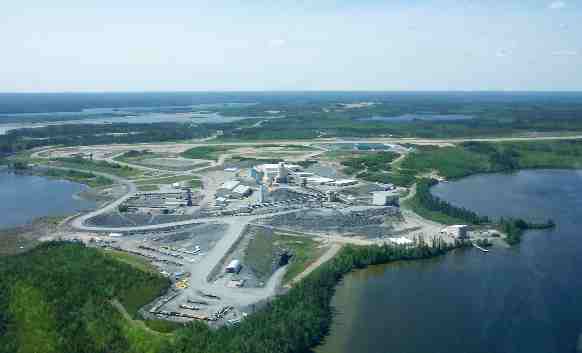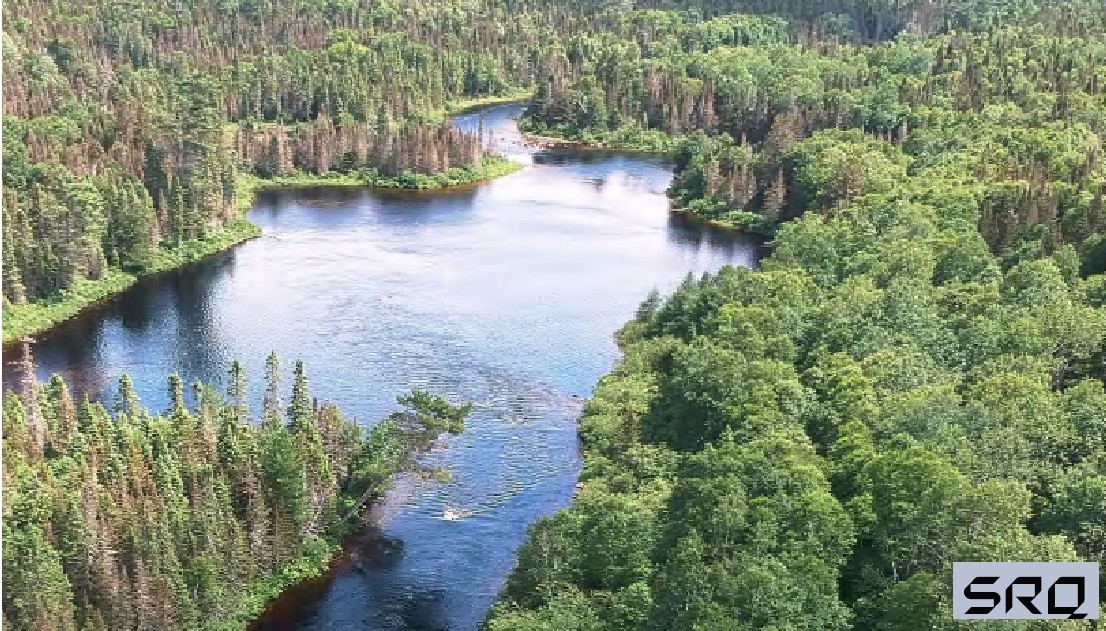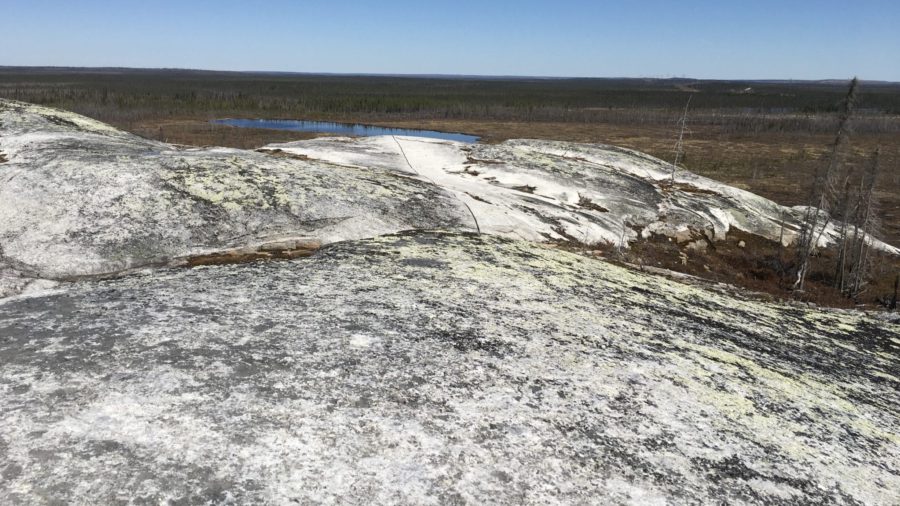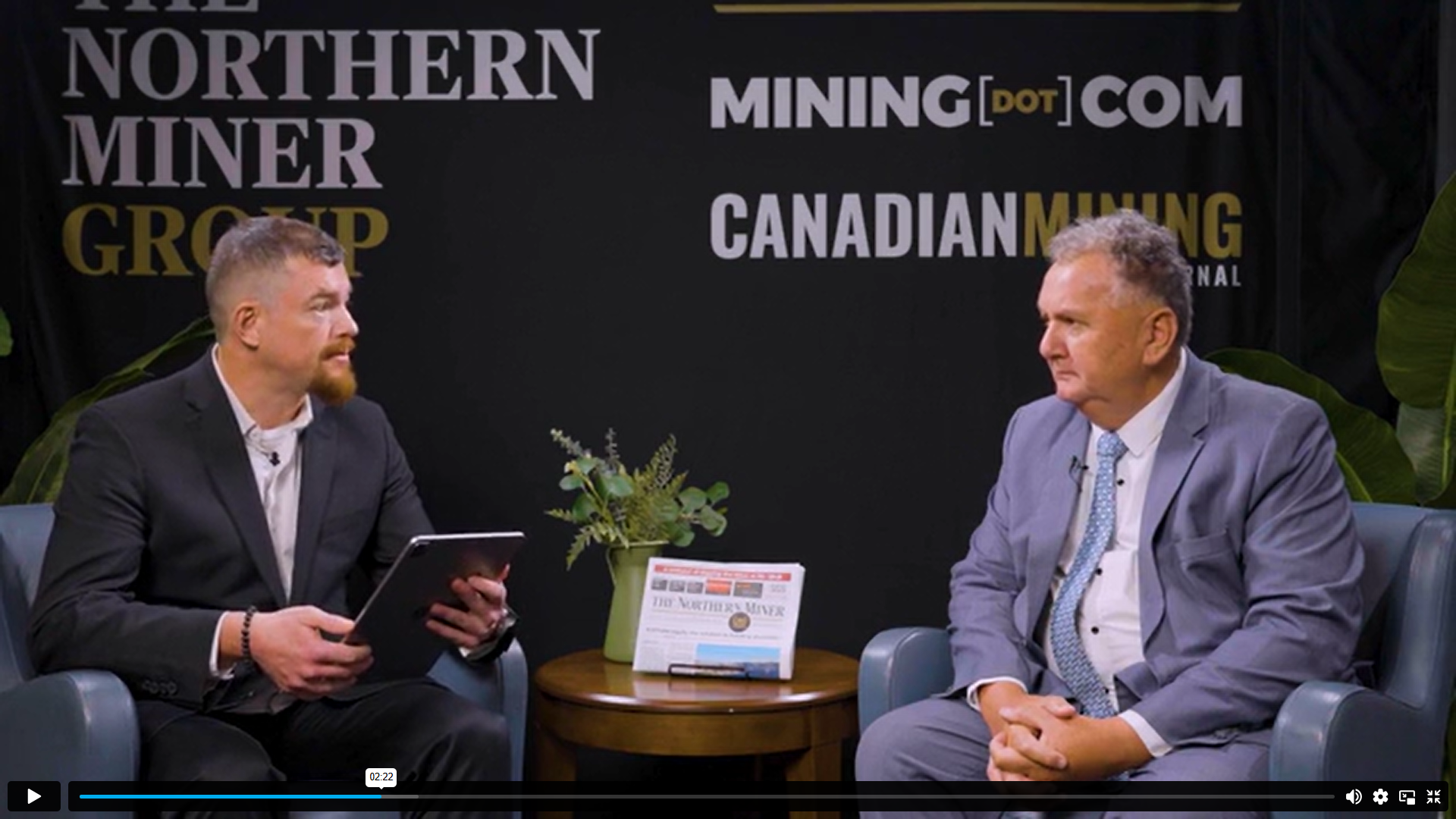Rubicon Rising?

Rubicon Minerals’ Phoenix gold project in Ontario. CREDIT: RUBICON MINERALS
Badly burned shareholders may not be interested in its turnaround story, but Rubicon Minerals’ Phoenix deposit in the Red Lake gold camp in Ontario is showing signs of rising from the ashes as its mythical name suggested it would.
Phoenix triggered a destruction of wealth and jobs when the deposit failed to meet expectations after reaching production in 2015. Investors saw a dramatic decline in the value of their shares after trial mining revealed that the geological interpretation of the deposit in the company’s preliminary economic assessment (PEA) didn’t match what was actually there. The mine was put on care and maintenance.
New management is proceeding carefully. The main difference, said president and CEO George Ogilvie in an interview with CMJ, is that Rubicon is using orientated diamond drilling so that when core is removed from the barrel, the company’s geoscientists know exactly how it is positioned in three-dimensional space.
“Because we know how the core is orientated in 3-D space, when the geologists are logging the quartz veins and sulphides that carry the gold, they can project where the gold could be at other elevations in the mine. And if we pick up similar structures as we drill, we can join the dots,” he said. “More importantly, we’ve identified three distinct orientations that allow us to model gold back into the geological structural model.”
Ogilvie, formerly president of Kirkland Lake Gold, joined the company in 2017 along with director of projects Michael Willett, a professional engineer with 32 years of experience, including as general manager of Hudbay Minerals’ Snow Lake operations in Manitoba.

Underground at Phoenix. CREDIT: RUBICON MINERALS
In August, Rubicon released an updated PEA for Phoenix. The PEA estimates the mine can be built at an initial capital cost of $101.2 million for an internal rate of return of 40.2% and a net present value of $135.2 million, both after taxes. Assuming a gold price of US$1,325 per oz., the payback period would be 3.9 years. Phoenix is expected to produce 79,610 oz. per year over a life of six years at an all-in sustaining cost of US$882 per oz.
The market reaction to the new PEA was moderately positive in the broader context of a gold bull market. The value of Rubicon’s shares had reached almost $1 by the end of August, up from a 52-week low of 61¢ in early July.
Late last year, Rubicon extracted a 35,000-tonne bulk sample from Phoenix that reconciled what the new geological model had predicted. Rubicon also achieved mill throughput of 1,540 tonnes per day with recoveries of 95% (43% of gold recovered from gravity).
The more conservative approach to development begins with Rubicon’s choice of consultants. Ogilvie said Rubicon hired Golder Associates in 2017 because of its reputation for prudence and a strong structural team that could understand Phoenix’s complex geology. The company also took the unusual step of hiring T. Maunula & Associates, which has worked extensively for Kinross Gold, to conduct peer reviews on all of Golder’s work.
In early 2019, Rubicon announced a 110% increase in measured and indicated resources using a cut-off grade of 3 g/t gold. The measured resource, based on an average drill density of 15 metres, is 442,000 tonnes grading 6.99 g/t gold while the indicated resource, based on an average drill density of 30 metres, is 2.49 million tonnes grading 6.13 g/t for a total of 589,000 oz. gold. The inferred resource (average drill density 60 metres) is 2.57 million tonnes grading 6.53 g/t, adding another 540,000 potential oz. gold.
Golder devised the drill densities to better reflect the deposit’s complex geology and the gold’s nuggety nature. The 15-60 metre range for measured to inferred resources compares to the 50-70 metre range used for indicated to inferred resources by the old Rubicon (there were no measured resources in Phoenix’s original PEA, which should have been a red flag in itself.)
Now Rubicon is working on an internal resource update based on 13,000 metres of added drilling up to the end of the May to see if it can expand and upgrade the inferred resource. Another 2,000 metres of drilling between May and September would trigger a new NI 43-101 report by early 2020 and a feasibility study after that.
Rubicon raised $5.3 million in a non-brokered private placement at 77¢ per share in late July that boosted the treasury to $8.7 million and will fully fund the company’s activities until then. The company had current liabilities of $4.7 million at the end of 2018.
“Our primary objective at the moment is to move as much inferred to measured and indicated resources so that we have enough reserves in the feasibility study to show economics that would justify taking the deposit to commercial production,” Ogilvie said.
Rubicon benefits from the fact that 95% of the mine has been built. Phoenix has a working hoist, a 1,800-tonne per day processing mill, earthworks, a water treatment plant, and an electrical substation. There are 14,000 metres of underground workings, including an operational shaft to 730 metres below surface.
Another advantage is that Rubicon, after coming out of bankruptcy protection, is eligible for $690 million in tax loss pools from mill and surface construction and underground exploration and development. The tax loss effectively adds 1-2 grams per tonne to the resource grade because the company won’t pay tax on any profits, Ogilvie said.
There’s also the higher level of confidence that comes from collecting advanced exploration and development data for several years, including the costs of materials such as diesel and explosives, and the results of running 100,000 tonnes of ore through the mill.
“The mine plan and all the costs associated with it (in the new PEA) are not conceptual, they are based on five years of real, hard data,” Ogilvie said ahead of the study’s release. “I would put my hand on a bible and say that this PEA is a strong feasibility study other than it uses inferred resources in the mine plan (which a feasibility study cannot do).”
The PEA proposes longhole sublevel vertical retreat with 30-metre sublevels as the principal mining method. Other methods Rubicon is investigating are longhole upper retreat that would access ore from below and a more selective technique used in the Hemlo gold camp to mine mineralized veins less than one metre wide. Mechanized cut and fill would be used in high-grade areas with good continuity.
Exploration by the old Rubicon probed as deep as 1,600 metres below surface. Based on this and other drilling, Golder has estimated a non-compliant (“explore”) resource category, using a 100-metre drill density, of 900,000-1.1 million tonnes grading 7-9 g/t gold. Ogilvie said Rubicon would take the opportunity to move this resource into the inferred category next year.
Although Rubicon controls more than 280 sq. km of exploration ground in the Red Lake camp, regional exploration has taken a back seat to de-risking Phoenix lately. There are five separate targets within 2 km of the processing facility that warrant follow up once Phoenix is on steadier footing.
Assuming a positive feasibility study, commercial production is anticipated for the second half of 2021. Outstanding requirements to receive final permits for production include an ammonia reactor for the water treatment plant and impact and benefits agreements (IBAs) with the two First Nations groups in the area. Ogilvie is confident the company can achieve these goals in the time remaining.
“Wouldn’t it be great for the Canadian gold mining industry if we could turn around Phoenix and make it into a commercially viable mine generating profits and free cash flow?” said Ogilvie, noting that the gold price has increased recently. “Timing is everything and it appears we may be starting to enter a boom after seven years of a gold bear markEquipment & Supplierset.”





Comments